How to Grow Melons: Beginner’s Guide to Juicy Fruits
- March 4, 2024
- 3 comment
Melons, with their juicy sweetness, are a summertime delight. Growing melons in your garden can be rewarding and fun, provided you understand the basics. This guide will walk you through the essential steps to successfully grow melons, from selecting the right variety to harvest.
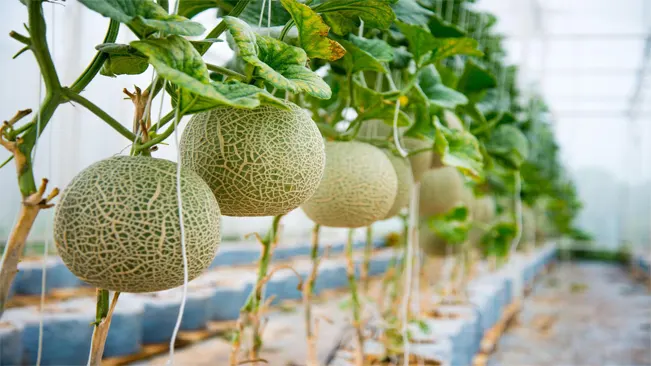
Nutritional Benefits of Melons
| Benefit | Description |
|---|---|
| Hydration | Melons have a high water content, making them great for staying hydrated, especially in hot weather. |
| Nutrient Rich | They are a good source of essential vitamins and minerals, including Vitamin C, Vitamin A, and potassium. |
| Low in Calories | Melons have a low calorie count, making them a healthy snack option for weight management. |
| Digestive Health | The water and dietary fiber in melons help promote healthy digestion and prevent constipation. |
| Skin Health | Rich in antioxidants and vitamins, melons can help improve skin health and prevent signs of aging. |
| Heart Health | Potassium in melons aids in maintaining healthy blood pressure levels, contributing to heart health. |
| Immune System Support | High Vitamin C content boosts the immune system, aiding in the prevention of various illnesses. |
| Anti-inflammatory Properties | Certain compounds in melons have anti-inflammatory effects, which can help reduce inflammation in the body. |
| Cancer Prevention | Antioxidants like lycopene in some melons can help in reducing the risk of certain types of cancer. |
| Eye Health | Beta-carotene and Vitamin A in melons are beneficial for maintaining good eyesight and preventing eye disorders. |
List on How To Grow Melons
- Choosing the Right Variety
- Planting
- Sunlight and Temperature
- Watering and Feeding
- Support and Spacing
- Harvesting
- Pest and Disease Control
Choosing the Right Variety
Melons come in various types, including watermelon, cantaloupe, honeydew, and muskmelon. Your choice depends on your climate and taste preferences. Some popular varieties are ‘Sugar Baby’ (watermelon), ‘Hale’s Best’ (cantaloupe), and ‘Honey Dew Green Flesh’. Research the varieties that grow well in your area.
Types of Melons
Watermelon: Known for their large size and refreshing, juicy flesh. Watermelons are particularly sensitive to cold and need warm, long growing seasons. They come in seeded and seedless varieties.
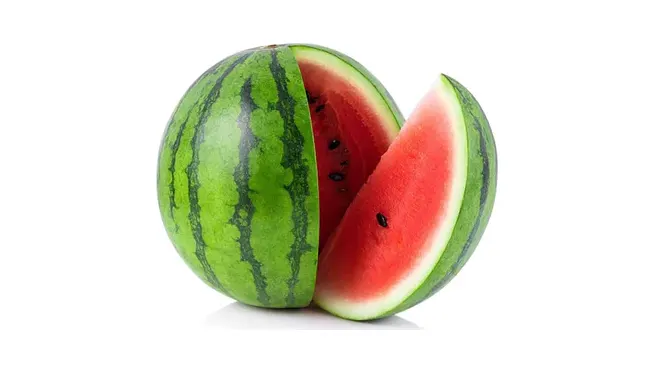
‘Sugar Baby’: A small, round variety known for its sweet, red flesh. It matures quickly, making it a good choice for cooler climates with shorter growing seasons.
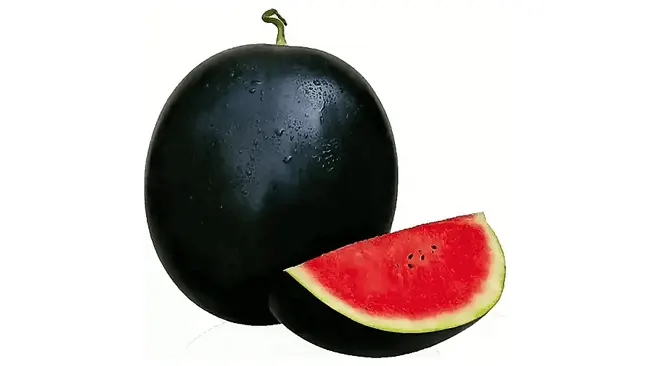
‘Crimson Sweet’: Larger than ‘Sugar Baby’, this variety is prized for its sweet, deep red flesh and disease resistance.
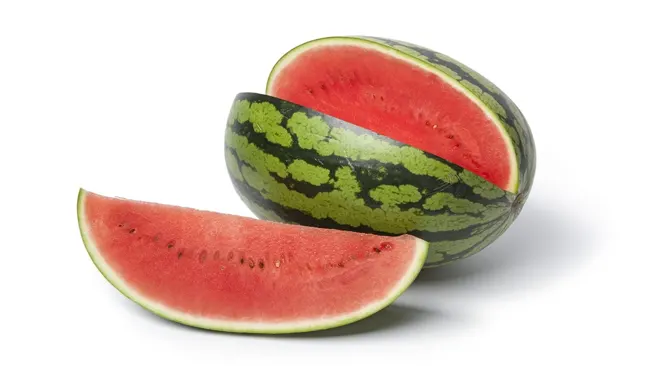
Cantaloupe (Muskmelon): These melons have a netted rind and sweet, often orange flesh. They generally require warm temperatures but mature faster than watermelons.
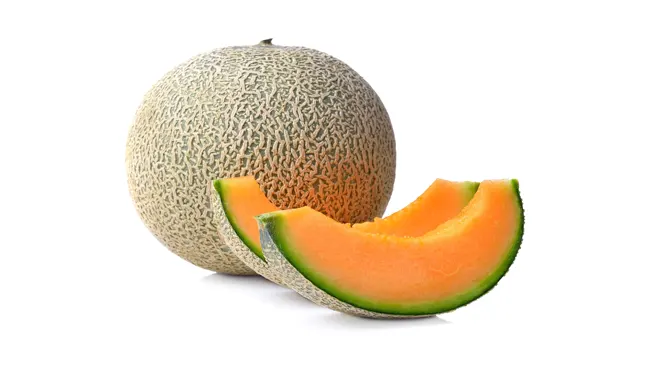
‘Hale’s Best’: An heirloom variety known for its sweet, flavorful flesh and good resistance to drought and disease.

‘Athena’: Widely adapted to various climates, known for its consistent flavor and good shelf life.
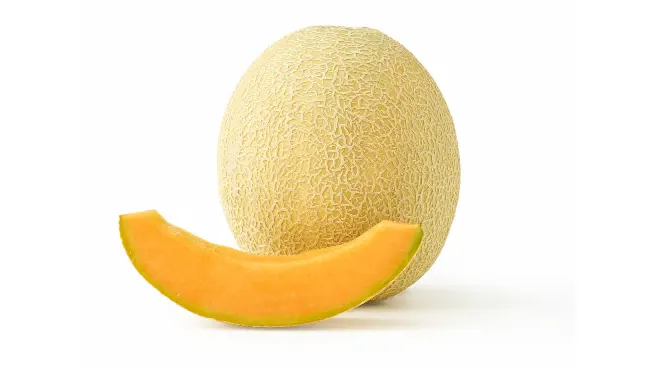
Honeydew: These melons have smooth rinds and sweet, usually green flesh. They grow well in warm conditions and can take longer to mature than cantaloupes.
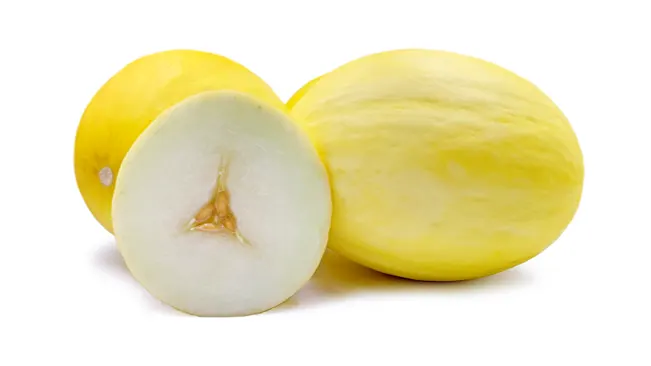
‘Honey Dew Green Flesh’: Classic honeydew with sweet, green flesh. Requires a long, warm growing season.
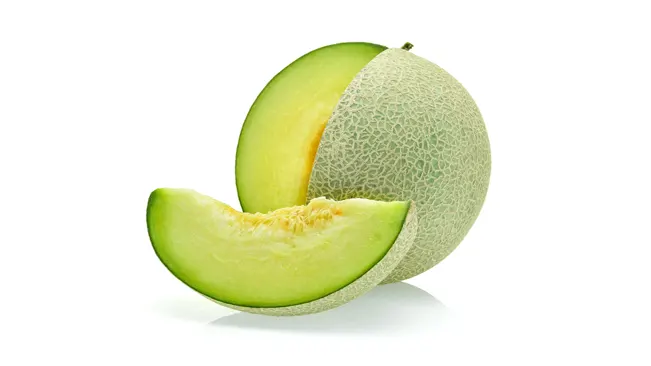
‘Orange Flesh Honeydew’: This variety offers a unique twist with its orange flesh, combining the texture of a honeydew with the taste similar to a cantaloupe.
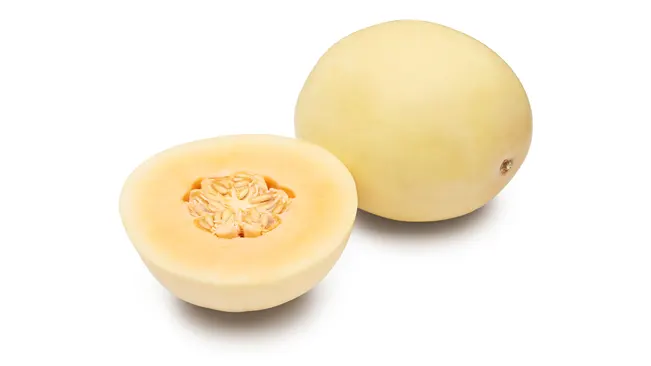
Considerations for Choosing Melon Varieties
- Climate Suitability: Check your local growing conditions and choose a variety that can thrive in your climate. For instance, shorter-season varieties are better for cooler climates.
- Space Requirements: Consider the amount of space you have. Some watermelon varieties, for instance, require a lot of space for their vines to spread, while others are bred to be more compact.
- Taste and Use: Decide what you prefer in terms of taste and how you plan to use the melons. For fresh eating, you might prefer a sweeter variety. For salads or cooking, certain textures might be more desirable.
- Disease Resistance: Look for varieties that are resistant to common diseases in your area. This can reduce the need for chemical treatments and increase the success rate of your melon growing.
- Maturity Time: If you have a shorter growing season, look for early-maturing varieties that will produce fruit before the first fall frost.
Planting
Melons thrive in warm temperatures and need a long growing season. Plant seeds indoors about 4-6 weeks before the last expected frost date or directly in the ground when soil temperatures reach 70°F (21°C). Plant the seeds 1 inch deep in nutrient-rich, well-drained soil. Ensure a spacing of 2-3 feet between plants and 4-6 feet between rows.

Timing
- Melons need warm temperatures, both day and night, for optimal growth. The ideal time to start planting is after the danger of frost has passed and when the soil has warmed up. In most temperate climates, this is usually late spring or early summer.
- In cooler climates, starting seeds indoors can give you a head start. Begin sowing seeds about 4-6 weeks before the last expected frost date. This allows the seedlings to develop sufficiently and be ready for transplanting when the outdoor conditions are favorable.
Soil Preparation
- Melons prefer well-drained, fertile soil. Before planting, it’s a good idea to enrich the soil with compost or a balanced fertilizer. This will provide the necessary nutrients for growth.
- The soil pH should ideally be between 6.0 and 7.5. You can test the soil pH using a home testing kit and adjust it if necessary.
Planting Depth and Spacing
- When planting melon seeds, place them about 1 inch deep in the soil. This depth provides enough coverage for the seeds to germinate effectively while not being so deep that they struggle to emerge.
- Proper spacing is crucial for healthy growth. Space the plants approximately 2-3 feet apart. This spacing allows each plant enough room to grow, ensuring adequate air circulation and reducing the risk of disease.
- Rows should be spaced 4-6 feet apart. This distance provides room for the vines to spread out and for you to move between rows for maintenance and harvesting.
Sowing Seeds Directly or Transplanting
- In warmer climates, you can sow seeds directly into the ground. This is often preferred as melons can be sensitive to transplanting.
- In cooler areas, transplant the indoor-started seedlings once the outdoor conditions are suitable. Handle the seedlings with care to avoid disturbing the roots. Harden off the seedlings by gradually exposing them to outdoor conditions over several days before planting them in the garden.
Mulching and Watering
- After planting, applying a layer of mulch can help retain soil moisture and control weeds.
- Water the plants regularly, especially during the germination and early growth stages. Once established, melons prefer deep, infrequent watering to encourage strong root growth.
Sunlight and Temperature
Melons are sun-loving plants and require 6-8 hours of direct sunlight daily. They grow best in temperatures between 70°F and 90°F (21°C-32°C). Protect the plants from cold snaps and frost.
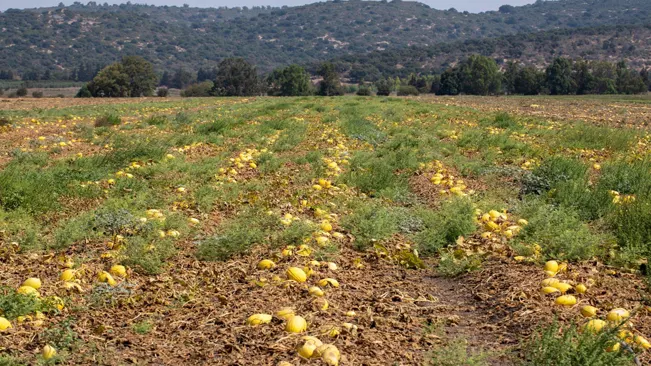
- Sunlight Requirements
- Intensity and Duration: Melons require intense, direct sunlight for 6-8 hours each day. This sunlight is crucial for photosynthesis, the process by which plants convert light energy into the energy they need to grow and produce fruit.
- Effects on Fruit Development: Adequate sunlight ensures that melons develop a rich flavor and high sugar content. Insufficient sunlight can lead to poorly developed, less flavorful fruits.
- Plant Placement: When planting melons in a garden or on a farm, it’s important to choose a location with maximum sun exposure, free from shade caused by buildings, trees, or other plants.
- Temperature Requirements
- Optimal Growth Range: Melons thrive in warm temperatures, ideally between 70°F and 90°F (21°C-32°C). These temperatures promote vigorous growth and optimal fruit development.
- Germination: Melon seeds require warm soil to germinate effectively. Soil temperatures below 70°F (21°C) can significantly delay or inhibit germination.
- Fruit Setting and Ripening: Warm temperatures are also crucial during the fruit-setting and ripening stages. Cooler temperatures can slow down these processes, affecting the quality and yield of the melons.
- Protection from Cold
- Frost Sensitivity: Melon plants are sensitive to frost and cold weather. Exposure to cold can damage or kill the plants.
- Seasonal Planting: It’s important to plant melons after the last frost in spring and ensure they mature before the first frost of fall.
- Cold Protection Measures: In cooler climates or during unexpected cold snaps, protective measures such as using row covers or cloches can help safeguard the plants.
- Considerations for Different Climates
- Hot Climates: In areas with intense heat, melons may need some afternoon shade to prevent overheating and sunscald on the fruits.
- Cooler Climates: In regions with cooler summers, choosing early-maturing varieties and using techniques to warm the soil (like black plastic mulch) can enhance growth.
Watering and Feeding
Regular watering is crucial, especially during fruit set and growth. Water deeply once a week, allowing soil to dry slightly between waterings. Avoid overwatering as it can dilute the fruit’s flavor. Use a balanced fertilizer every 4-6 weeks.
Watering Melons
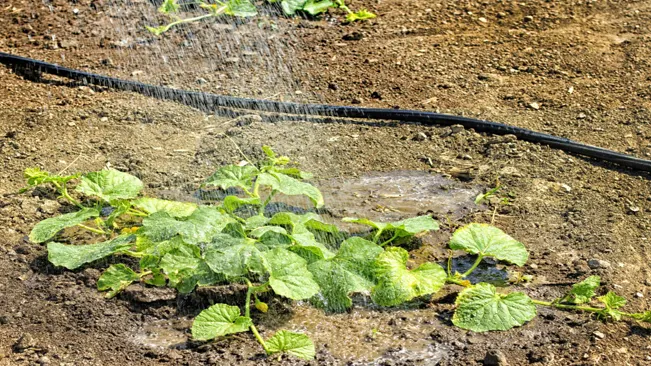
- Consistency and Depth: Melons require consistent moisture, especially during the key stages of fruit set and growth. It’s important to water deeply, which means the water should reach 6 to 8 inches below the soil surface. This deep watering encourages the roots to grow deeper, which in turn helps the plant access nutrients and moisture more effectively.
- Frequency: The frequency of watering will depend on your climate and soil type. In general, watering once a week is a good rule of thumb. However, in very hot or windy conditions, more frequent watering may be necessary. Conversely, in cooler or cloudier weather, you might need to water less often.
- Avoiding Overwatering: Overwatering can be just as harmful as under-watering. Too much water can lead to root rot and other diseases. It can also dilute the sugars in the fruit, affecting the flavor. Allow the soil to dry slightly between waterings, but not so much that the plants start to wilt.
- Mulching: Using mulch around your melon plants can help retain soil moisture and reduce the need for frequent watering. Organic mulches like straw or wood chips also add nutrients to the soil as they decompose.
Feeding Melons
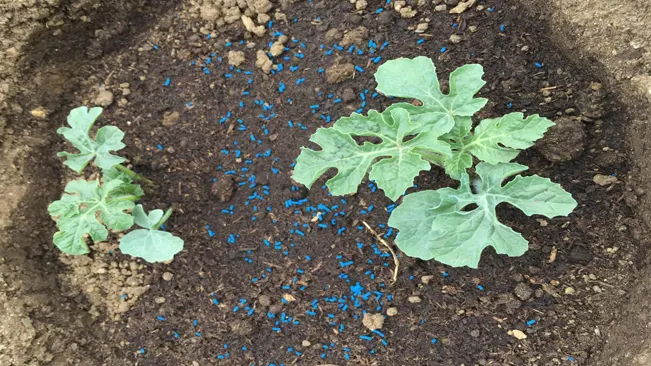
- Type of Fertilizer: A balanced fertilizer is ideal for melon plants. Look for a fertilizer with equal parts nitrogen, phosphorus, and potassium (e.g., 10-10-10 NPK formula). This balanced approach ensures that the plant gets all the necessary nutrients for overall growth, root development, and fruit production.
- Frequency: Applying fertilizer every 4 to 6 weeks during the growing season is generally recommended. Start fertilizing once the plant has established itself and has a few true leaves.
- Method of Application: Fertilizer can be applied around the base of the plant, avoiding direct contact with the stems or leaves to prevent burning. Water the soil well after applying the fertilizer to help it soak into the soil and reach the roots.
- Organic Options: If you prefer organic gardening, well-composted manure or compost can be a great alternative to commercial fertilizers. They not only provide nutrients but also improve soil structure and health.
Support and Spacing
As the vines grow, they may need support to keep fruit off the ground. Use trellises or slings for support. Proper spacing allows for adequate air circulation, reducing the risk of fungal diseases.
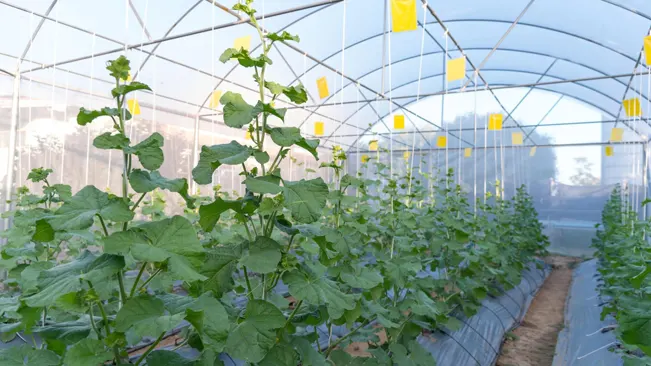
- Fruit Rot: Melons resting on moist soil are prone to rotting.
- Pest Attacks: Fruits are more susceptible to pest attacks when lying on the ground.
- Uneven Ripening: Fruits may not ripen evenly due to limited sunlight exposure.
To counter these problems, many gardeners use supports like trellises or slings. Here’s how they help:
- Trellises: These are frameworks of lattices that support the weight of the vines and growing fruits. Trellises keep the fruits off the ground, promoting air circulation and even ripening. They also make harvesting easier and save garden space.
- Slings: As melons grow larger, especially varieties like watermelons, their weight might be too much for the vine to bear. Slings, made from materials like pantyhose or cloth, cradle the fruit and distribute its weight evenly. They prevent the fruit from falling off the vine before it’s ripe.
Spacing of Melon Plants
Proper spacing is key to the healthy growth of melon plants:
- Air Circulation: Adequate space between plants ensures good air circulation, which is vital in preventing fungal diseases like powdery mildew and downy mildew. These diseases thrive in damp, crowded conditions.
- Nutrient Absorption: Each plant needs sufficient space to spread its roots and absorb nutrients and water. Overcrowded plants compete for these essentials, which can lead to poor growth and fruit development.
- Sunlight Exposure: Melons need plenty of sunlight. Proper spacing ensures that each plant receives enough sunlight, which is crucial for the development of sugars in the fruits, leading to better flavor and ripening.
Harvesting
Melons are ready to harvest when they emit a sweet fragrance and the underside turns a creamy color. The stem should detach easily from the fruit. Handle the fruits carefully to avoid bruising.
Indicators of Ripeness
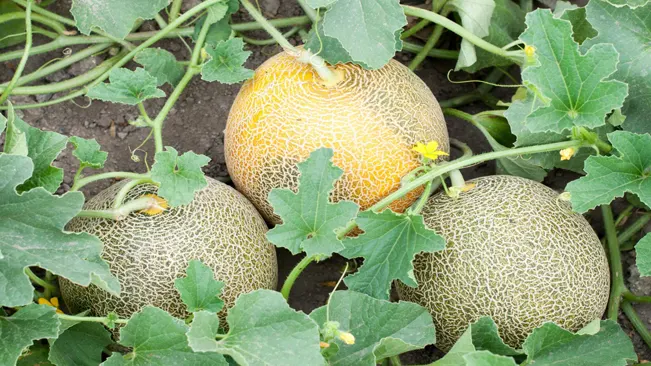
- Sweet Fragrance: One of the first signs that a melon is ready for harvest is its aroma. Ripe melons, especially varieties like cantaloupes and honeydews, emit a noticeably sweet and fruity fragrance.
- Color Change: The color of the melon’s skin and the part of the melon resting on the ground (the “ground spot”) can indicate ripeness. In many varieties, the ground spot changes from green to a creamy, yellowish color when the melon is ripe.
- Texture of the Rind: For some melon types, the texture of the rind changes as they ripen. For instance, the netting on the rind of cantaloupes becomes more pronounced and the rind itself may feel slightly softer.
- Stem Detachment: A ripe melon often detaches easily from the vine. The stem near the fruit becomes brittle and may crack, indicating that the melon is ready to be picked. This is particularly noticeable in cantaloupes and is known as the “slip stage.”
Harvesting Technique
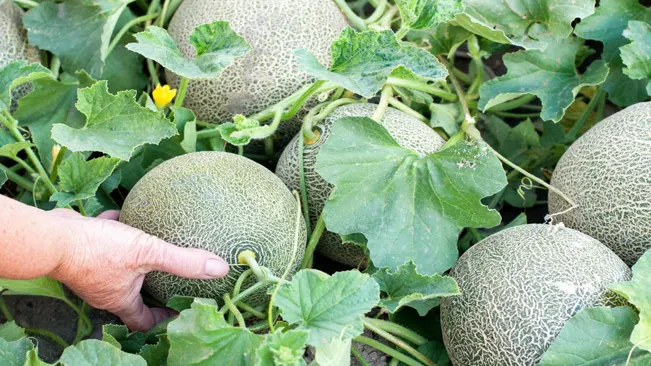
- Gentle Handling: When you’ve identified a ripe melon, handle it with care to avoid bruising. Bruising not only damages the fruit’s appearance but can also hasten spoilage.
- Cutting the Stem: For melons that don’t naturally slip from the vine, such as watermelons and honeydews, use a sharp knife or garden shears to cut the stem close to the fruit.
- Immediate Use vs. Storage: Melons like cantaloupes continue to ripen after being picked, so you can store them at room temperature for a few days to enhance their sweetness. Watermelons, however, do not continue to ripen and should be consumed shortly after harvesting for the best taste.
Common Challenges
- Determining the Perfect Time: Judging the right time to harvest can be tricky, especially for beginners. Picking too early means the melon may not be as sweet, while waiting too long can lead to overripe or spoiled fruit.
- Varietal Differences: Different melon varieties have different indicators of ripeness. It’s helpful to familiarize yourself with the specific characteristics of the variety you are growing.
Pest and Disease Control
Common pests include cucumber beetles and aphids. Diseases like powdery mildew and downy mildew can also affect melons. Use organic pesticides and practice crop rotation to manage these issues.
Common Pests in Melon Cultivation
- Cucumber Beetles: These are small, striped or spotted beetles that feed on melon leaves, flowers, and young fruits. They can also transmit bacterial diseases and viruses to the plants.
- Aphids: These tiny insects suck the sap from the leaves, causing them to curl and become distorted. Aphids can also spread viral diseases.
Effective Pest Control Strategies
- Regular Monitoring: Regularly inspect your melon plants for signs of pests. Early detection is key to effective control.
- Natural Predators: Encourage beneficial insects like ladybugs and lacewings, which feed on aphids and other harmful pests.
- Insect Barriers: Floating row covers can prevent pests from accessing the plants, especially during the seedling stage.
- Organic Pesticides: Neem oil, insecticidal soaps, and diatomaceous earth are effective organic options to control pests without harming beneficial insects.
Common Diseases in Melon Cultivation
- Powdery Mildew: This is a fungal disease that appears as white, powdery spots on leaves and stems. It can weaken the plant and reduce fruit quality.
- Downy Mildew: This appears as yellow or brown spots on the leaves, often with a fuzzy, mold-like growth on the underside. It thrives in cool, wet conditions.
Effective Disease Control Strategies
- Proper Spacing: Ensure adequate spacing between plants to improve air circulation, which helps keep the foliage dry and less susceptible to fungal diseases.
- Watering Practices: Water the plants at the soil level to avoid wetting the leaves. Wet foliage can create an environment conducive to fungal growth.
- Fungicides: Organic fungicides like sulfur and copper-based products can be used to control mildew. Always follow the manufacturer’s instructions for application.
- Crop Rotation: Rotating your melon crops with non-cucurbit plants helps prevent the buildup of soil-borne diseases.
Preventive Measures
- Healthy Soil: Maintain healthy soil with good organic matter, which helps plants resist diseases.
- Resistant Varieties: Choose melon varieties that are resistant to common pests and diseases.
- Sanitation: Keep the garden area clean and free of plant debris where pests and diseases can overwinter.
Conclusion
Growing melons can be a fun and rewarding experience. With the right care, you can enjoy fresh, homegrown melons straight from your garden. Remember to monitor your plants regularly and adjust care as needed to ensure a bountiful harvest.
FAQs (Frequently Asked Questions)
- What is the best time to plant melons?
- Plant melon seeds in spring, after the last frost, when the soil has warmed up to at least 70°F (21°C).
- Plant melon seeds in spring, after the last frost, when the soil has warmed up to at least 70°F (21°C).
- How much space do melon plants need?
- Melon vines need a lot of space to grow. Space plants about 2-3 feet apart in rows that are 4-6 feet apart.
- Melon vines need a lot of space to grow. Space plants about 2-3 feet apart in rows that are 4-6 feet apart.
- Do melons need full sun?
- Yes, melons thrive in full sun, requiring at least 6-8 hours of direct sunlight daily.
- Yes, melons thrive in full sun, requiring at least 6-8 hours of direct sunlight daily.
- How often should I water melon plants?
- Water deeply once or twice a week, allowing the soil to dry slightly between waterings. Avoid overwatering to prevent root rot.
- Water deeply once or twice a week, allowing the soil to dry slightly between waterings. Avoid overwatering to prevent root rot.
- What type of soil is best for growing melons?
- Melons prefer well-drained, nutrient-rich soil with a pH between 6.0 and 6.8.
- Melons prefer well-drained, nutrient-rich soil with a pH between 6.0 and 6.8.
- Do I need to fertilize melon plants?
- Yes, fertilize with a balanced fertilizer every 4-6 weeks during the growing season to support growth.
- Yes, fertilize with a balanced fertilizer every 4-6 weeks during the growing season to support growth.
- How do I know when melons are ready to harvest?
- Melons are ready when they sound hollow when tapped, the underside turns a different color (usually yellow), and the stem starts to detach easily.
- Melons are ready when they sound hollow when tapped, the underside turns a different color (usually yellow), and the stem starts to detach easily.
- Do melons need a lot of space to grow?
- Yes, melon vines spread widely. Using trellises can save space and support vertical growth.
- Yes, melon vines spread widely. Using trellises can save space and support vertical growth.
- Can I grow melons in containers?
- Yes, you can grow smaller varieties of melons in large containers, ensuring they have enough space and support for the vines.
- Yes, you can grow smaller varieties of melons in large containers, ensuring they have enough space and support for the vines.
- How do I protect melon plants from pests?
- Keep the area weed-free, use row covers to protect young plants, and apply organic pesticides if necessary. Regularly inspect plants for signs of pests and diseases.

Kristine Moore
Forestry AuthorI'm Kristine Moore, a seasoned garden landscaping professional with over 30 years of experience. My extensive career has been dedicated to transforming outdoor spaces into stunning, sustainable landscapes. With a deep understanding of horticulture, design principles, and environmental stewardship, I have become a respected figure in the field, known for creating harmonious, visually appealing, and eco-friendly gardens. My commitment to excellence and continuous learning in landscaping trends and techniques has solidified my reputation as an expert in garden design and implementation.
3 comments
Am in Uganda central region, what is the best month of the year to begin planting watermelon? How many holes per acre?
TEBIGGWAYO HENRY
March 5, 2024 2:15 amIn Uganda's central region, plant watermelons during the rainy seasons in March-May or September-November. Aim for 800-1,000 holes per acre, spacing plants 2 meters apart and rows 2.5 meters apart for optimal growth.













Thank you. Every time you learn about what you are passionate about, gives joy to the heart. I have planted a lot in the past and this year, armed with this knowledge, I hope to Ace it. Thank you.
Elphus Moropodi
March 12, 2024 5:20 pm